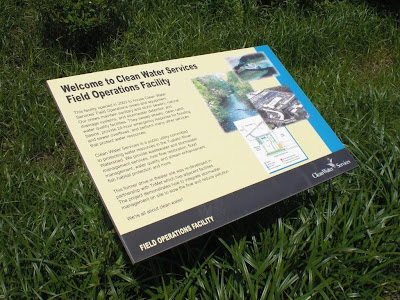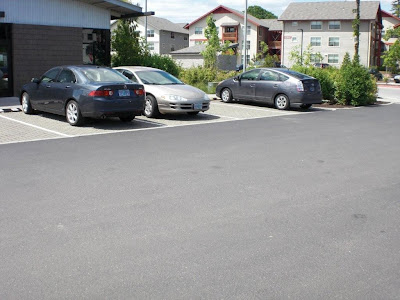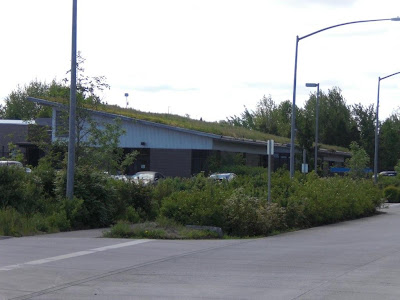A recent trip out to a meeting at the Clean Water Services Field Operations Center yielded some interesting images of some of the innovative stormwater ideas that were implemented into this project, which opened in 2003. The design was completed by Pivot Architecture from Eugene, along with Murase Associates from Portland as landscape architect.
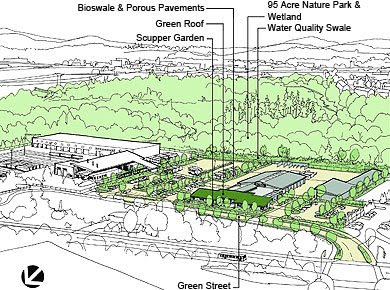
:: image via Pivot Architecture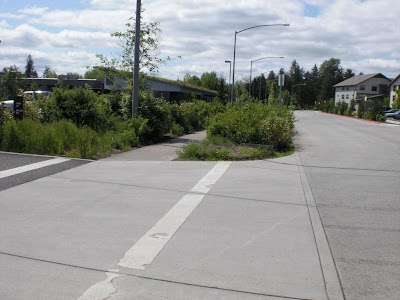
As a water resource utility provider in the Portland metro area, Clean Water Services folded their mission into the design of the site and building: Thankfully rebranding from the Unified Sewerage Agency to CWS in 2001, this better reflected this mission (from their site): “Today we work to improve water quality in our local streams, manage flooding, protect fish habitat, manage flow in the Tualatin River, and operate four award-winning wastewater treatment facilities. Our nationally recognized work in water resource management is an investment in clean and thriving waterways.”
The facility offers a number of strategies as a public face, including permeable parking, rain gardens, curbless green streets, and the visible ecoroof. The vegetation, predominately natives, have literally blown up, and create annother visible cue to the different sort of facility that exists here.
:: permeable pavers in public parking – image via L+U
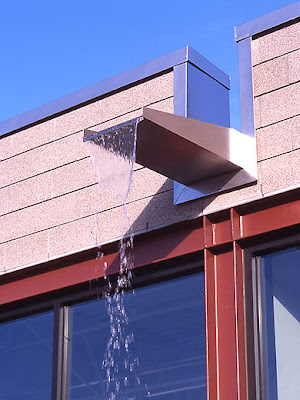
:: Scuppers to rain garden – image via Pivot Architecture
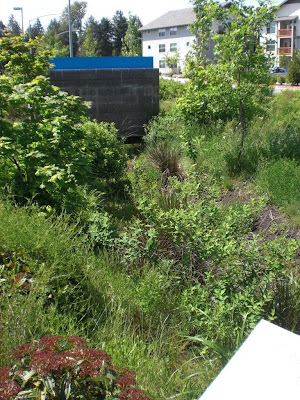
:: linear rain garden in front of building – image via L+U
:: crushed gravel employee seating areas – image via L+U
And the ecoroof, covering approximately 8000 square feet, is canted towards the street, making it a very visible cue to the facility. The facility is located on a service road, and until a few years back (and the introduction of some housing between, the roof used to be visible from the adjacent higher traffic roadway. An unfortunate loss, as there are not many ecoroofs, much less visible ones in Beaverton so this definitely caught the eye.
The roof has undergone some revisions over time as the right mix of vegetation is found, which is laudable for any client to realize that there needed to be adjustment and take the time to do so. There were a number of plants that were more clumping varieties and didn’t spread, leaving gaps in the roof vegetation. These were augmented with new species that provided better cover and now the roof features a base of sedums along with other natives and grasses to give it more of a natural and full appearance.
